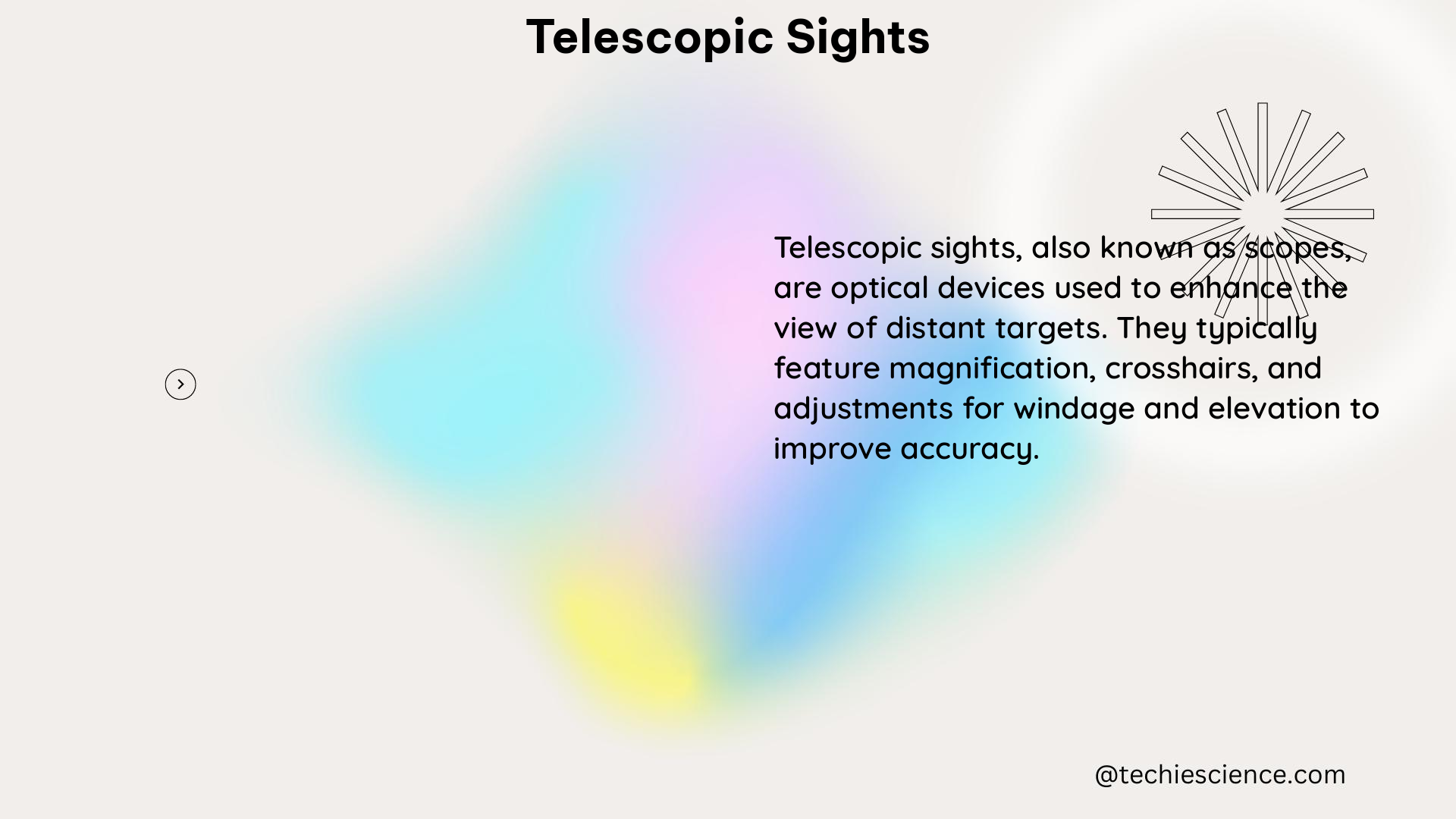Telescopic sights are optical devices that play a crucial role in precision aiming and shooting, particularly in hunting, shooting sports, and military applications. These sophisticated instruments harness the principles of optics and physics to provide shooters with enhanced accuracy and target acquisition. In this comprehensive guide, we will delve into the technical specifications, underlying physics principles, and measurable data associated with telescopic sights, equipping you with a deep understanding of these essential tools.
Technical Specifications of Telescopic Sights
Magnification
The magnification power of a telescopic sight, often represented as “X,” indicates how many times larger the target appears compared to the naked eye. For example, a 4x magnification makes the target appear four times larger. The magnification power is calculated using the formula:
Magnification Power = (Objective Lens Diameter / Eyepiece Diameter)
This relationship between the objective lens and eyepiece diameters determines the overall magnification of the sight. Shooters can choose from a wide range of magnification powers, typically ranging from 1x to 25x or higher, depending on their specific needs and the intended application.
Objective Lens Diameter
The objective lens diameter, measured in millimeters, affects the light-gathering capability of the telescopic sight. A larger objective lens diameter allows for a brighter and clearer image, especially in low-light conditions. This is particularly important for long-range shooting or hunting in environments with limited ambient light.
Field of View (FOV)
The field of view (FOV) represents the width of the area visible through the sight at a specific distance and magnification. It is usually measured in feet at 100 yards or meters at 100 meters. A wider FOV can be advantageous for tracking moving targets or maintaining situational awareness, while a narrower FOV may be preferred for precision long-range shooting.
Eye Relief
Eye relief is the distance between the user’s eye and the sight’s eyepiece, allowing for a clear and unobstructed view. A longer eye relief is essential for users wearing glasses or for firearms with high recoil, as it prevents the eyepiece from striking the user’s face during the shot.
Adjustment Range
The adjustment range refers to the range of elevation and windage adjustments available on the telescopic sight, typically measured in minutes of angle (MOA) or milliradians (MRAD). This feature allows shooters to compensate for factors such as distance, wind, and bullet drop, ensuring accurate shot placement.
Reticle Type
The reticle, or crosshair, can be simple or complex, with various patterns and illumination options. Reticles can be located in the first focal plane (FFP) or the second focal plane (SFP), which affects how the reticle’s size changes with magnification. FFP reticles maintain their apparent size relative to the target, while SFP reticles remain a constant size in the sight picture.
Tube Diameter
The diameter of the sight’s tube affects its durability, weight, and light transmission. Common tube diameters include 1-inch and 30mm, with the larger 30mm tubes generally offering improved light transmission and increased adjustment range.
Lens Coatings
Various lens coatings can be applied to the telescopic sight’s optical elements to improve light transmission, reduce glare, and protect the lenses from scratches and dirt. These coatings play a crucial role in enhancing the sight’s overall performance and image quality.
Physics Principles and Measurable Data

Optical Power
The magnification power of a telescopic sight can be calculated using the formula:
Optical Power = (Objective Lens Diameter / Eyepiece Diameter)
This relationship between the objective lens and eyepiece diameters determines the overall magnification of the sight.
Exit Pupil
The exit pupil is the diameter of the light beam leaving the eyepiece and can be calculated using the formula:
Exit Pupil = Objective Lens Diameter / Magnification Power
The size of the exit pupil is an important factor in determining the brightness and clarity of the image, as it affects the amount of light that reaches the user’s eye.
Twilight Factor
The twilight factor is a measure of the sight’s performance in low-light conditions and can be calculated using the formula:
Twilight Factor = (Magnification Power x Objective Lens Diameter)^0.5
A higher twilight factor indicates better low-light performance, which is crucial for hunting and other applications where targets may need to be acquired in dimly lit environments.
Light Transmission
The percentage of light transmitted through the telescopic sight can be measured using a spectrophotometer or other specialized equipment. This metric is crucial for determining the sight’s effectiveness in low-light conditions, as it directly affects the brightness and clarity of the image.
Resolution
The ability of the telescopic sight to distinguish fine details can be measured in line pairs per millimeter (lp/mm) or cycles per degree (cpd). This resolution metric is influenced by factors such as the quality of the optical elements, the coatings applied, and the overall design of the sight.
By understanding these technical specifications and the underlying physics principles, shooters and enthusiasts can make informed decisions when selecting the most appropriate telescopic sight for their needs, whether it’s for hunting, competitive shooting, or military applications.
References:
- Wrike Project Management Guide: What is SMART?
- How to Write SMART Goals
- Operationalization: A Practical Guide

The lambdageeks.com Core SME Team is a group of experienced subject matter experts from diverse scientific and technical fields including Physics, Chemistry, Technology,Electronics & Electrical Engineering, Automotive, Mechanical Engineering. Our team collaborates to create high-quality, well-researched articles on a wide range of science and technology topics for the lambdageeks.com website.
All Our Senior SME are having more than 7 Years of experience in the respective fields . They are either Working Industry Professionals or assocaited With different Universities. Refer Our Authors Page to get to know About our Core SMEs.